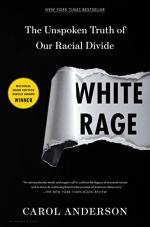
|
| Name: _________________________ | Period: ___________________ |
This test consists of 15 multiple choice questions and 5 short answer questions.
Multiple Choice Questions
1. By 1969, what percent of Prince Edward County schools were Black?
(a) 56%.
(b) 98%.
(c) 25%.
(d) 10%.
2. In addition to student aid cuts, Reagan reduced what school program by $1.46 billion?
(a) Physical Education.
(b) Nutrition.
(c) Music.
(d) Art.
3. What strategy did Black Americans adopt during the civil rights movement?
(a) Migration.
(b) Stop and frisk.
(c) Nonviolence.
(d) Violence.
4. Who was president at the start of the Civil Rights Era?
(a) Reagan.
(b) Trump.
(c) Obama.
(d) Nixon.
5. When the Fourth Circuit Ruled that schools must integrate by 1959, county supervisors did what to divert money from public schools?
(a) Increased income tax.
(b) Reduced income tax.
(c) Abolished the property tax.
(d) Increased property tax.
6. What powerful force did Blacks use to expose to the world how they have been treated?
(a) The media.
(b) Social Media.
(c) Email campaigns.
(d) The Internet.
7. Which national organization does Anderson name as supporting the civil rights movement at the start of Chapter 4?
(a) The Confederation of Southern Christian Kings.
(b) The National Association for the Advancement of Colored People.
(c) The King’s Southern Christian Leadership Conference.
(d) The Leaders of the Southern Christian Association.
8. In Virginia, what percent of Blacks attended desegregated schools?
(a) 99.9.
(b) 15.
(c) 1.63.
(d) 25.2.
9. What does HUAC stand for?
(a) House of United Academic Commission.
(b) House of Unilateral Academic Correspondences.
(c) House Un-American Activities Commission.
(d) House Un-American Academy of Colleges.
10. Who was president when Sputnik was launched?
(a) Dwight D. Eisenhower.
(b) Lyndon B. Johnson.
(c) Donald J. Trump.
(d) John F. Kennedy.
11. What word describes the claim made in the Deep South and Virginia stating they did not have to follow federal laws with which they disagreed?
(a) Intergeneration.
(b) Interposition.
(c) Interrogation.
(d) Interlocution.
12. Under Reagan’s administration, a series of student aid cuts worked to reduce Black enrollment by how much?
(a) 20%.
(b) 8%.
(c) 80%.
(d) 35%.
13. According to Anderson, quality education can do what for people?
(a) Improve housing conditions.
(b) Improve health outcomes.
(c) Improve health outcomes, break the cycle of poverty, and improve housing conditions.
(d) Break the cycle of poverty.
14. Why were sentences for crack and cocaine thought to racially discriminate?
(a) Possession of either drugs got the same amount of time.
(b) Crack possession got more time than cocaine.
(c) Cocaine was considered legal.
(d) Cocaine possession got more time than crack.
15. What organizing founded in 1966 believed in self-defense rather than non-violence?
(a) The Civil Rights Committee.
(b) NAACP.
(c) The KKK.
(d) The Black Panther Party.
Short Answer Questions
1. In 1970, what act was renewed for another five years?
2. After the Supreme Court handed down two rulings requiring schools to reopen, what method of keeping schools segregated was employed?
3. In response to Cooper v. Aaron, the Governor of Arkansas did what to public schools?
4. In 1949, what governor proposed an amendment that would send money to private white schools and get rid of public schools?
5. What newspaper is not one of the three referenced in regards to America’s view on Sputnik?
|
This section contains 492 words (approx. 2 pages at 300 words per page) |

|




